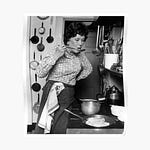Today’s podcast is part of a series to accompany my current serialized novel, An Interpreter in Vienna, as we investigate the truth in fiction. You can also listen to the podcast via Apple or Spotify or in the Substack app. As always, feel free to share any of your work related to the conversation. Thank you!

A full AI-created transcript can be accessed on the desktop version.
Keywords:
The language of clothes
Chronotope
Clothing can show:
Place, culture
Identity – i.e. subcultures, gender
Traditions (vs. change)
Politics
Weather
Time period
Functionality
Power relationships / class, societal position, work
Considerations for your work:
Are there certain identities of your characters that can be enhanced through their clothing and fashion choices?
How can the sartorial selections in your story portray a particular culture or time period effectively (even if that time is now)?
In what ways could clothing show power relationships in your text? Consider who decides what is appropriate or allowed as well as why a character decides to wear what they do and if it is in sync with what they want or who they are.
Feel free to share your related work or recommendations in the comments.
Texts:
BEST, JANICE. “The Chronotope and the Generation of Meaning in Novels and Paintings.” Criticism 36, no. 2 (1994): 291–316. http://www.jstor.org/stable/23116271.
Zemka, Sue. “Brief Encounters: Street Scenes in Gaskell’s Manchester.” ELH 76, no. 3 (2009): 793–819. http://www.jstor.org/stable/27742959.
Kleespies, Ingrid. “Caught at the Border: Travel, Nomadism, and Russian National Identity in Karamzin’s ‘Letters of a Russian Traveler’ and Dostoevsky’s ‘Winter Notes on Summer Impressions.’” The Slavic and East European Journal 50, no. 2 (2006): 231–51. https://doi.org/10.2307/20459249.
Hoy, Mikita. “Bakhtin and Popular Culture.” New Literary History 23, no. 3 (1992): 765–82. https://doi.org/10.2307/469229.
Tennant, P. F. D. “Ibsen as a Stage Craftsman.” The Modern Language Review 34, no. 4 (1939): 557–68. https://doi.org/10.2307/3716413.
Tar Baby, Toni Morrison
Orlando, Virginia Woolf
Kitchen, Banana Yoshimoto
A Doll’s House, Henrik Ibsen
The Dialogic Imagination. Four Essays by M. M. Bakhtin. Trans. Caryl Emerson and Michael Holquist. (University of Texas Press Slavic Series, 1.) Austin: Univ. of Texas Press, 1981.















Share this post